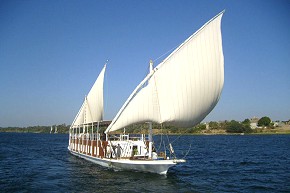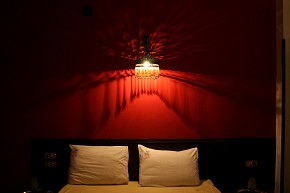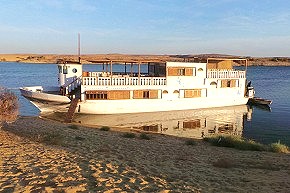We Provide
- Building Land
- Gorf *2202 (175 sqm)
- Aqalta *2216 (350 sqm)
- Gabawi *1712 (350 sqm)
- Gorf *2203 (350 sqm)
- Seoul *2204 (400 sqm)
- Gorf *2105 (525 sqm)
- Aqalta *2226 (700 sqm)
- Gorf *2206 (700 sqm)
- Aqalta *2207 (1,050 sqm)
- Aqalta *2236 (3,500 sqm)
- House Building Service
- Architecture
- Real Estates
- Hotel in Gezira
- Algana Compound, Qurna
- Villa Hana, Ramla
- Villa Hana, Ramla
- Villa Suraya, Habu
- Beit Tabuna, Habu
- Shell Apartment Papyrus, Habu
- Shell Apartm. House Mudir Gorf
- Shell Villa Farha, Gorf
- Apartment Hatshepsut 2, Gezira
- Apartment Hatshepsut 3, Gezira
- Apartment Hatshepsut 4, Gezira
- Holiday Flats
- Hatshepsut 1 (1 BR), Gezira
- Hatshepsut 2 (1 BR), Gezira
- Nile View (1 BR), Ramla
- Hatshepsut 3 (2 BR), Gezira
- Hatshepsut 4 (2 BR), Gezira
- Hatshepsut 5 (2 BR), Gezira
- Hatshepsut 7 (2 BR), Gezira
- Hatshepsut 9 (2 BR), Gezira
- Hatshepsut 6 (3 BR), Gezira
We Organise
We Report
- Sorry, no more news!
- News 2014 (26)
- News 2013 (76)
- News 2012 (92)
- News 2011 (125)
- News 2010 (31)
- News 2009 (12)
- News Overview
Useful Tools
Dahabiya Nile Cruises• from Esna to Aswan |
Privately Owned Hotel for Sale, Luxor Westbank• Centrally, quietly located in Gezira |
Lake Nasser Cruises• from Aswan or Abu Simbel |
![]()
Living in Luxor - Excursions: Trips to Esna
Esna (Isnā - إسنا) is situated some 65 km south of Luxor on the western bank of the River Nile and connected to the east bank by a causeway. Esna was the starting respectively ending point of camel trains to Kharga and Dush in Kharga Oasis. Nowadays, Esna is a centre of Coptic Christians. Its main attraction is the Ptolemaic temple in the middle of the town, 9 metres beneath the level of the modern streets and houses. It was dedicated to the ram-headed god Khnum. Esna is also the starting point of most of the ![]() Dahabiya Nile cruises, which take you in 5 or 6 days to Aswan!
Dahabiya Nile cruises, which take you in 5 or 6 days to Aswan!
![]()
Temple of Esna
The present structure of the Khnum Temple dates to the Greek and Roman periods and is one of the latest temples to have been built by the ancient Egyptians. It was built on the site of a temple dating to the 18th dynasty.
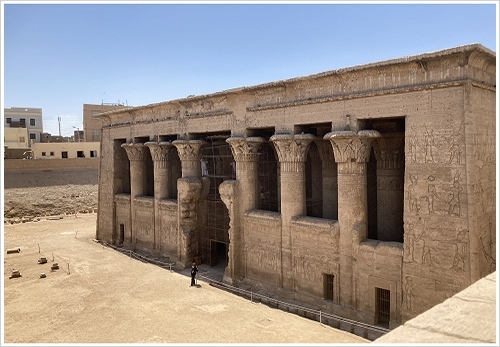
Khnum Temple at Esna
Only the pronaos (I), excavated in 1842, remained. The rest of the temple (II - IV) is still buried beneath the surrounding buildings of the modern town. Once, one got through the pronaos (I) to the hypostyle hall (II) and the sanctuary (III) which were surrounded by a gallery wall (IV). Originally, the temple was connected to the River Nile by a ceremonial way.
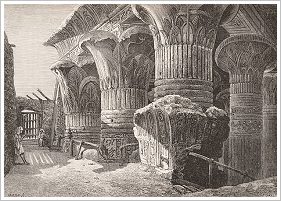
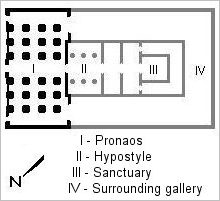
The buried temple in 1890 Map of the original temple
The Temple of Esna was mainly dedicated to the ram-headed god Khnum, who was thought to be the creator of the bodies of human children, which he made at a potter's wheel, from clay, and placed in their mothers' wombs. The tutelary deity Neith and the war goddess Menhit were also worshipped in the temple.
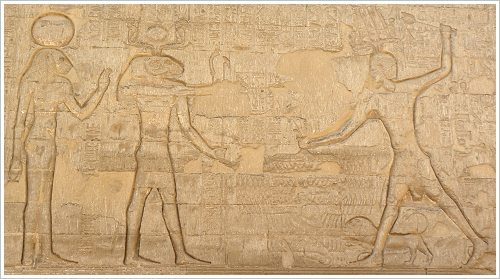
Emperor Domitian smiting his enemies in front of Menhit and Khnum
The façade of the pronaos is 37 metres in length and 15 metres in height. It consists of 6 columns. Behind it, there is the 16.4 metres deep hypostyle hall with 3 further rows of 6 columns.. The columns, all with differing lotus-leaf capitals, stand 11.3 metres high and have a circumference of 5.4 metres. They keep up the intact ceiling which is decorated with vultures and astronomical scenes.
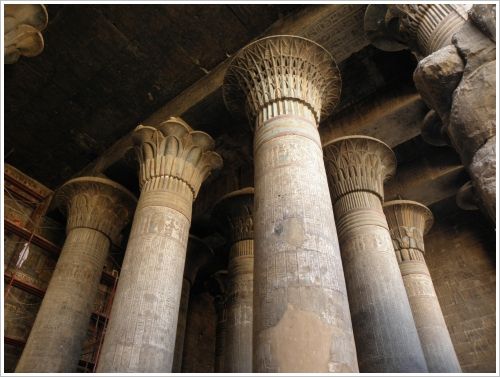
Columns in the Temple of Esna
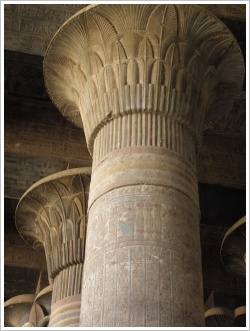
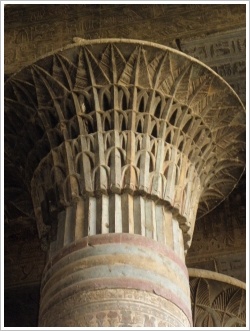
Columns in the Temple of Esna
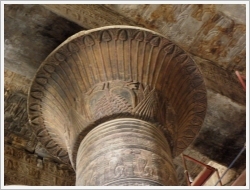
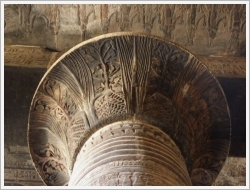
Columns in the Temple of Esna
The temple walls are extensively covered by filigree reliefs which are in the process of restoration for may years. The effective work of the egyptologists can be seen on the following photos. On every wall a small unrestored rectangle was taped to tell the difference (March 2011):
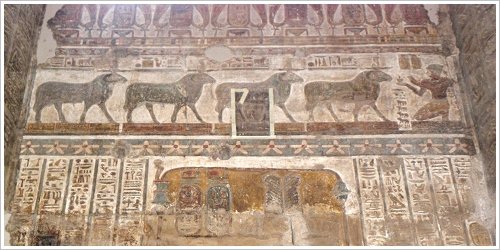
Domitian kneels in front of 4 depictions of Khnum
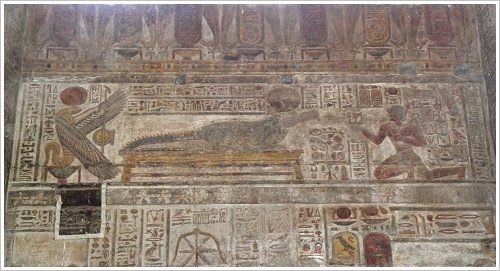
Wadjet, the cobra goddess, and the crocodile god
The ceiling of the pronaos shows Roman signs of the zodiac on the southern half and Egyptian astronomical figures with the sky goddess Nut and the tutelary goddess Taweret on the northern half.
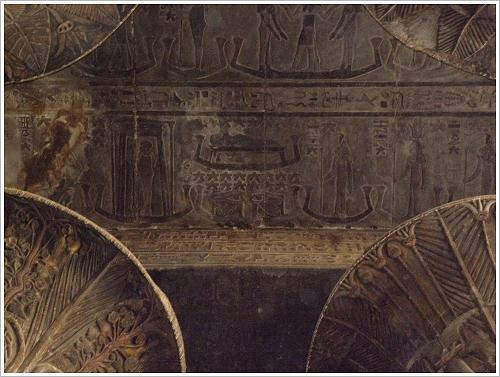
Ceiling of the temple
On the outer walls of the temple are depictions of the Roman emperors accompanied by gods or when smiting enemies.
In the courtyard of the temple, there stand the remains of a Christian basilica. At its south side you can see a statue of the lion-headed goddess Menhit. She is also depicted on the outer walls and inside the temple.
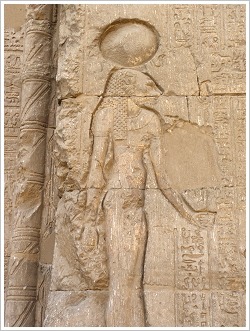
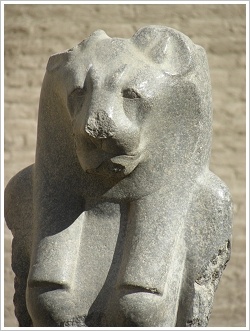
Lion-goddess Menhit
![]()
Discover Esna
Esna has so much more to offer than only the Khnum Temple. From 2017 to 2020, Takween, an urban development company based in Cairo with an office in Esna, worked on a project that had the aim to rediscover Esna's cultural heritage. Takween restored significant places like the old Caravanserai (Wakālat al-Jiddāwī), the Bakkūr oil press, the Fatimid Al-'Amriyya minaret, the wood-covered Al-Qīsāriyya market and several middle-class houses with gorgeous wooden balconies and elaborately decorated lintels from the 17th, 18th and 19th centuries. ![]() Join us in discovering Esna!
Join us in discovering Esna!
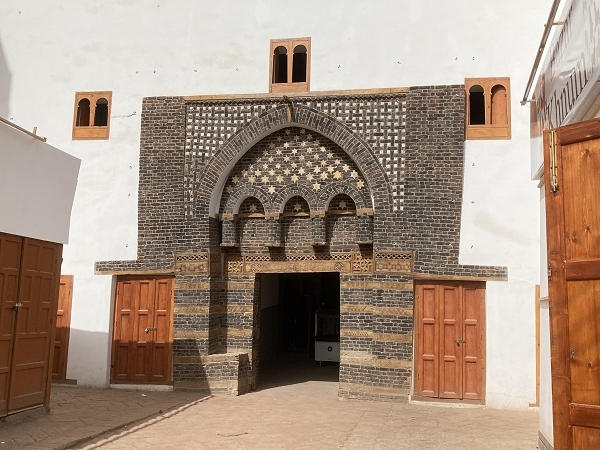
Restored caravanserai in Esna
![]()
Our Service in Luxor
For your trip starting at Luxor we organise a car which takes you to Esna and if you wish as well to the rock-cut tombs and temples of El-Kab. Kindly let us know your wishes, we make you a favourable offer.
![]()
Geographical Position
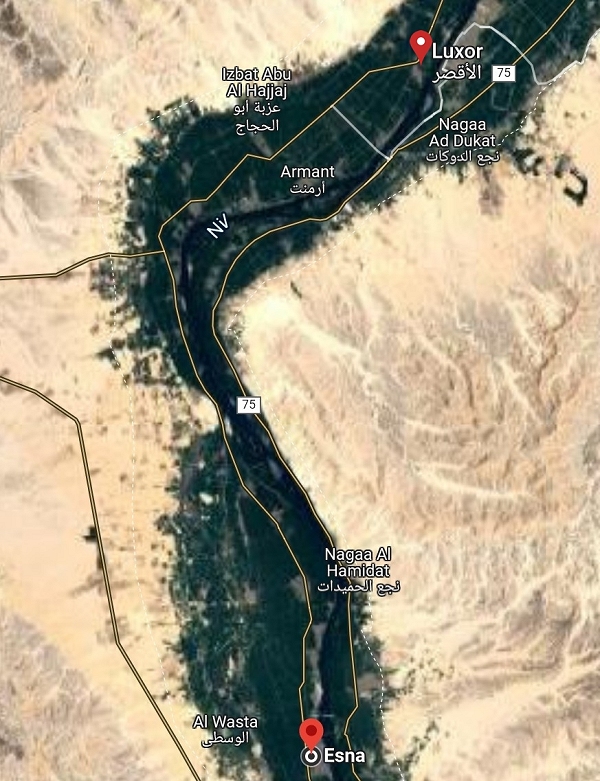
Route from Luxor (A) to Esna (B),© Google
 To the list of excursions ...
To the list of excursions ...
